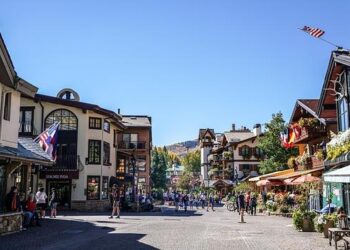In Jamaica, the Indigenous population is still referred to as the Arawaks, despite the adoption of the term Taínos to distinguish the native population of the Greater Antilles from the Arawaks of South America. The influential US archaeologist Irving Rouse defined Taínos as ‘the ethnic group that inhabited the Bahamian Archipelago, most of the Greater Antilles, and the northern part of the Lesser Antilles prior to, and during the time, of [Christopher] Columbus’.
According to Rouse, the people referred to themselves by the names of the localities in which they lived. For example, Puerto Ricans called themselves Borinquen, which is their name for the island, and Bahamians called themselves Lucayo. This raises the question of what the Taínan name for Jamaica is. Traditionally, Jamaicans have been formally taught that Xaymaca was the Taíno name given to the island, meaning ‘land abounding with springs’, from which ‘Jamaica’ or ‘land of wood and water’, was derived. However, other sources have suggested Yamaye as the possible Taíno name for the island, based on information derived from Columbus’s journal.
The term Arawak has been, and still is, mistakenly used to denote the indigenous peoples of the Greater Antilles and the Bahamas.
History Pre-Colombian / Colonial
The genetic evidence offers new insights into the first human migrations of the Caribbean. The islands’ first inhabitants, a group of stone tool-users, travelled by boat to Cuba about 6,000 years ago, gradually expanding eastwards to other islands during the region’s Archaic Age. Where these people came from remains unclear. While they are more closely related to Central and South Americans than to North Americans, their genetics do not match any particular indigenous people. However, similar artifacts found in Belize and Cuba suggest a Central American origin.
About 2,500-3,000 years ago, farmers and potters related to the Arawak-speakers of northeast South America established a second pathway into the Caribbean. Using South America’s Orinoco River Basin as a highway, these people travelled from the interior to coastal Venezuela and pushed north into the Caribbean Sea, settling in Puerto Rico and eventually moving westwards into Hispaniola, Jamaica and Cuba. Their arrival ushered in the region’s Ceramic Age, marked by agriculture and the widespread production and use of pottery.
The Yamaye Taíno of Jamaica today are descendants of Ceramic Age people, as well as European immigrants and enslaved Africans.
Spanish Colonization
Christopher Columbus arrived on the shores of Yamayeka in 1494. It was here that he first unleashed the mastiff dog attacks on local populations in a bid to assert dominance after the Yamaye Taíno refused to allow him to land his ships on their shores. Columbus later found himself on the island on the very site where he had initiated these dog attacks, only this time he was marooned and dependent on support from the Yamaye Taíno.
What followed was a mutiny led by several of Colombus’ men, especially the Porras brothers who travelled throughout the island raping and pillaging. As a result of the mutiny, Columbus was denied food back at his makeshift fort in St Ann’s Bay. In his desperation, Colombus resorted to trickery. Using his astronomical tables, he correctly predicted a lunar eclipse and declared that his God had been angered by the Yamaye Taíno’s lack of generosity. Columbus was able to get the food he needed and survive long enough to be rescued.
In 1510, the notorious Juan de Esquivel, the infamous participant in the subjugation of Higuey in Ayiti/Kiskeya (Hispaniola, today Haiti and the Dominican Republic), arrived to become Jamaica’s first Spanish governor. Esquivel’s arrival marked the start of a deadly campaign to eradicate indigenous people from Jamaica’s shores.
Contrary to most contemporary and historical accounts, Yamaye Taíno did survive the genocidal rule of Esquivel, by heading into the mountainous regions of the island. Many people settled in Sierra de Bastidas, known today as the Blue Mountains. Here, Taíno communities flourished far away from the Spanish hatos (plantations) and ranchos. They maintained their traditions and raised their families. Many expeditions were launched in an attempt to find and tame the Yamaye Taíno. Even though it was known that Taíno settlements existed, none could be found. Yamaye Taíno also survived in small villages located near the main Spanish centres, especially after the notorious encomienda indigenous enslavement practice was abolished and replaced by the less repressive repartimento forced labour system.
British Invasion
In 1655, the British landed and pushed the Spanish out of the island. Thus began another challenging period in the colonial history of the Yamaye Taíno people. Whereas the Spanish interfered little with Taíno language survival, this was not the case during the British occupation of Jamaica. British interest in the island was mostly related to large sugar plantations, an economy that relied on ownership of land and titles that in turn rested on political propaganda declaring indigenous people extinct. Meanwhile, British colonists proceeded to hunt, deport and sell indigenous people into slavery.
British colonialism also saw the imposition of British culture and language upon the few indigenous groups who opted to accept peaceful co-habitation within the conditions set out by British rulers. Those who held fast in the mountains received runaway African slaves into their communities They would eventually be called the Simarabo, Cimarrons and Maroons. Those communities would later win their right to exist as free men and would sign peace treaties with the British. The Yamaye Taíno of the plains and valleys had families with European or African settlers and thus continued to flourish, hidden among the island’s growing mixed-race population, nurturing remaining elements of Taíno culture.
Source link : https://minorityrights.org/communities/yamaye-taino-people-in-jamaica/
Author :
Publish date : 2024-03-04 10:00:58
Copyright for syndicated content belongs to the linked Source.












